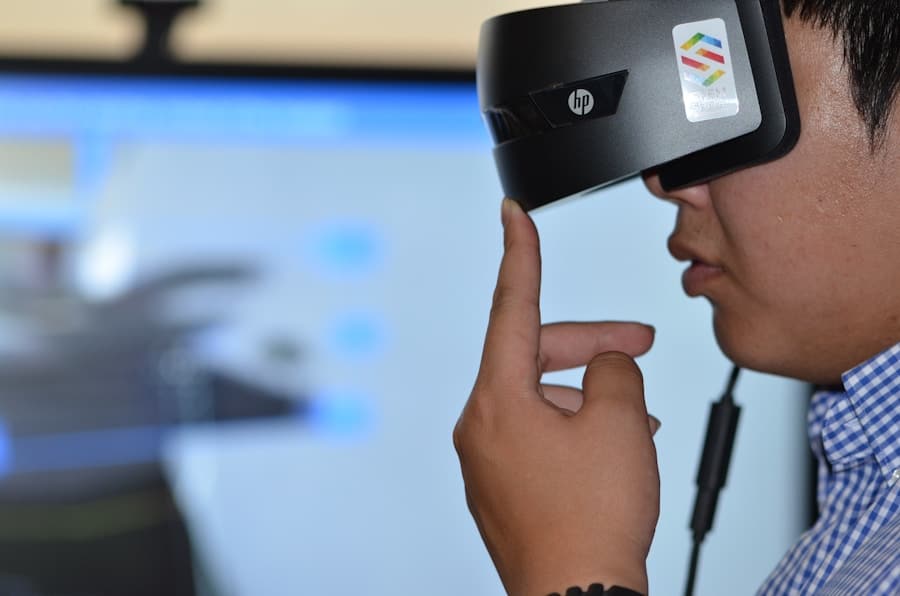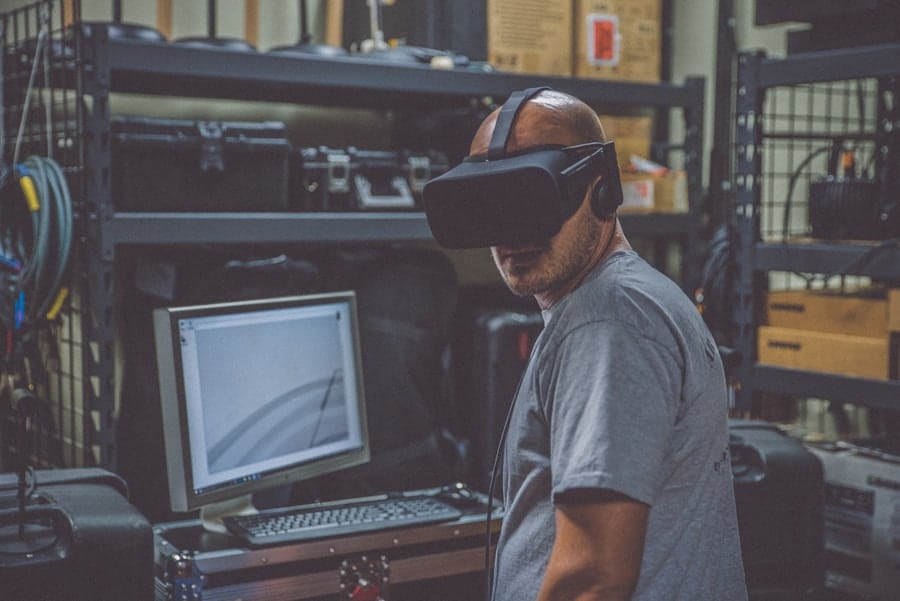The landscape of employee training is undergoing a significant transformation, driven by advancements in technology. Among the most influential innovations are Artificial Intelligence (AI) and Virtual Reality (VR), which are reshaping how organizations approach workforce development. AI refers to the simulation of human intelligence processes by machines, particularly computer systems, enabling them to learn, reason, and adapt.
On the other hand, VR immerses users in a computer-generated environment, allowing them to interact with 3D worlds in a way that feels real. Together, these technologies create a powerful synergy that enhances the training experience, making it more effective and engaging. As businesses strive to keep pace with rapid technological changes and evolving workforce needs, traditional training methods often fall short.
Conventional approaches, such as classroom lectures or static e-learning modules, can be monotonous and fail to capture the attention of employees. In contrast, AI and VR offer dynamic, interactive experiences that cater to diverse learning styles. By integrating these technologies into training programs, organizations can foster a culture of continuous learning and adaptability, equipping employees with the skills necessary to thrive in an increasingly complex work environment.
Key Takeaways
- AI and virtual reality are revolutionizing employee training by providing immersive and personalized learning experiences.
- The benefits of using AI and virtual reality in employee training include cost-effectiveness, increased engagement, and improved retention of information.
- AI and virtual reality can improve engagement and retention in training simulations by creating realistic and interactive scenarios for employees to learn from.
- AI plays a crucial role in personalizing employee training simulations by analyzing individual learning patterns and adapting the training content accordingly.
- Virtual reality has a significant impact on immersive learning experiences for employees, allowing them to practice real-life scenarios in a safe and controlled environment.
The Benefits of Using AI and Virtual Reality in Employee Training
The integration of AI and VR into employee training programs presents numerous advantages that can significantly enhance the learning experience. One of the most notable benefits is the ability to create realistic simulations that mimic real-world scenarios. For instance, in industries such as healthcare, VR can be used to simulate surgical procedures, allowing medical professionals to practice their skills in a safe environment without the risk of harming patients.
Moreover, AI can analyze employee performance data during training sessions, providing valuable insights into individual learning patterns and areas for improvement. This data-driven approach allows organizations to tailor training content to meet the specific needs of each employee.
For example, if an employee struggles with a particular skill or concept, AI can recommend additional resources or exercises to reinforce that area. This level of personalization ensures that employees receive targeted support, enhancing their overall learning experience and increasing the likelihood of skill retention.
How AI and Virtual Reality Can Improve Engagement and Retention in Training Simulations
Engagement is a critical factor in the effectiveness of any training program. Traditional training methods often lead to disengagement due to their passive nature. In contrast, AI and VR create immersive experiences that actively involve employees in the learning process.
For example, VR training modules can transport employees into a virtual environment where they must navigate challenges and make decisions in real-time. This active participation not only captures attention but also fosters a deeper understanding of the material being taught. Furthermore, the use of gamification elements within VR training can significantly enhance motivation and retention.
By incorporating game-like features such as points, levels, and rewards, organizations can create a competitive yet enjoyable learning atmosphere. Employees are more likely to remember information when they associate it with positive experiences and achievements. For instance, a retail company might use VR simulations to train employees on customer service skills, rewarding them with badges for successfully handling difficult customer interactions.
This approach not only reinforces learning but also encourages employees to apply their skills in real-world situations.
The Role of AI in Personalizing Employee Training Simulations
Personalization is a key advantage of integrating AI into employee training simulations.
By leveraging this data, organizations can create customized training paths that align with each employee’s unique strengths and weaknesses.
For instance, an employee who excels in technical skills but struggles with communication may receive targeted training modules focused on interpersonal skills. Additionally, AI can adapt training content in real-time based on an employee’s progress. If an employee demonstrates proficiency in a particular area, the AI system can automatically adjust the difficulty level or introduce more advanced concepts.
Conversely, if an employee is struggling, the system can provide additional resources or alternative explanations to facilitate understanding. This adaptive learning approach ensures that employees are neither overwhelmed nor under-challenged, leading to a more effective training experience.
The Impact of Virtual Reality on Immersive Learning Experiences for Employees
Virtual Reality has revolutionized the concept of immersive learning by providing employees with experiences that are both engaging and educational. Unlike traditional training methods that often rely on passive consumption of information, VR allows employees to actively participate in their learning journey. For example, in a manufacturing setting, VR can simulate complex machinery operations, enabling employees to practice troubleshooting techniques without the risk of equipment damage or safety hazards.
The immersive nature of VR also enhances emotional engagement, which is crucial for effective learning. When employees are placed in realistic scenarios that evoke emotional responses—such as high-pressure situations or customer interactions—they are more likely to remember the lessons learned during those experiences. Research has shown that emotional engagement significantly improves knowledge retention compared to traditional learning methods.
By creating a safe space for employees to experiment and learn from their mistakes, VR fosters a growth mindset that encourages continuous improvement.
Overcoming Challenges and Limitations of AI and Virtual Reality in Employee Training
Despite the numerous benefits associated with AI and VR in employee training, there are challenges and limitations that organizations must address to ensure successful implementation. One significant hurdle is the initial investment required for technology acquisition and development. High-quality VR equipment and software can be costly, which may deter some organizations from adopting these technologies.
Additionally, creating effective AI-driven training programs requires expertise in both technology and instructional design. Another challenge lies in ensuring accessibility for all employees. Not all individuals may feel comfortable using VR technology or may have physical limitations that hinder their ability to engage fully with immersive experiences.
Organizations must consider these factors when designing training programs to ensure inclusivity. Providing alternative training methods alongside VR options can help accommodate diverse employee needs while still leveraging the benefits of advanced technologies.
Case Studies: Successful Implementation of AI and Virtual Reality in Employee Training
Several organizations have successfully integrated AI and VR into their employee training programs, demonstrating the effectiveness of these technologies in enhancing workforce development. One notable example is Walmart, which has implemented VR training for its employees across various departments. The retail giant uses VR simulations to train employees on customer service scenarios, safety protocols, and even holiday rush preparations.
By immersing employees in realistic situations, Walmart has reported increased confidence among staff members and improved customer satisfaction ratings. Another compelling case is that of Boeing, which has utilized VR technology for its aircraft assembly training programs. By allowing technicians to practice complex assembly tasks in a virtual environment before working on actual aircraft, Boeing has significantly reduced errors and improved efficiency on the production line.
The company has found that VR training not only accelerates the onboarding process for new employees but also enhances the skill sets of experienced workers by providing ongoing opportunities for practice and refinement.
The Future of AI and Virtual Reality in Employee Training: Trends and Innovations
As technology continues to evolve, the future of AI and VR in employee training holds exciting possibilities. One emerging trend is the increasing use of mixed reality (MR), which combines elements of both AR (Augmented Reality) and VR to create hybrid experiences that enhance learning further. MR allows employees to interact with digital content overlaid onto their physical environment, providing contextually relevant information while they perform tasks in real-time.
Additionally, advancements in AI will likely lead to even more sophisticated personalization capabilities within training programs. Future AI systems may be able to predict an employee’s learning trajectory based on historical data and suggest proactive interventions before performance issues arise. This predictive analytics approach could revolutionize how organizations approach workforce development by enabling them to anticipate skill gaps and address them before they impact productivity.
In conclusion, as organizations continue to explore innovative ways to enhance employee training through AI and VR technologies, it is clear that these tools will play an increasingly vital role in shaping the future workforce. The potential for immersive learning experiences combined with personalized training paths offers a promising avenue for developing skilled professionals who are well-equipped to navigate the complexities of modern work environments.
In a related article, “Smartsender: Your Chatbot Platform for Seamless Customer Interactions”, explores how chatbot technology is revolutionizing customer interactions. This innovative software can enhance customer service and streamline communication processes for businesses. Just like AI and virtual reality are transforming employee training simulations, chatbots are reshaping the way companies engage with their customers, providing a more efficient and personalized experience.
FAQs
What is AI and Virtual Reality (VR) in the context of employee training simulations?
AI, or artificial intelligence, refers to the simulation of human intelligence processes by machines, particularly computer systems. Virtual Reality (VR) is a computer-generated simulation of an environment that can be interacted with in a seemingly real or physical way. In the context of employee training simulations, AI and VR are used to create immersive and interactive training experiences for employees.
How are AI and VR enhancing employee training simulations?
AI and VR are enhancing employee training simulations by providing realistic and immersive environments for employees to practice and learn new skills. AI can create intelligent virtual characters that can interact with employees, while VR can create lifelike simulations of real-world scenarios for employees to experience and learn from.
What are the benefits of using AI and VR in employee training simulations?
The benefits of using AI and VR in employee training simulations include increased engagement and retention, the ability to practice skills in a safe and controlled environment, and the opportunity to provide personalized and adaptive training experiences for employees. Additionally, AI and VR can help reduce training costs and time by providing scalable and repeatable training experiences.
What are some examples of AI and VR in employee training simulations?
Examples of AI and VR in employee training simulations include virtual reality simulations for customer service training, AI-powered virtual mentors for sales training, and immersive VR environments for safety and compliance training. These technologies can also be used for soft skills training, such as leadership and communication, by creating realistic scenarios for employees to practice and improve their skills.



